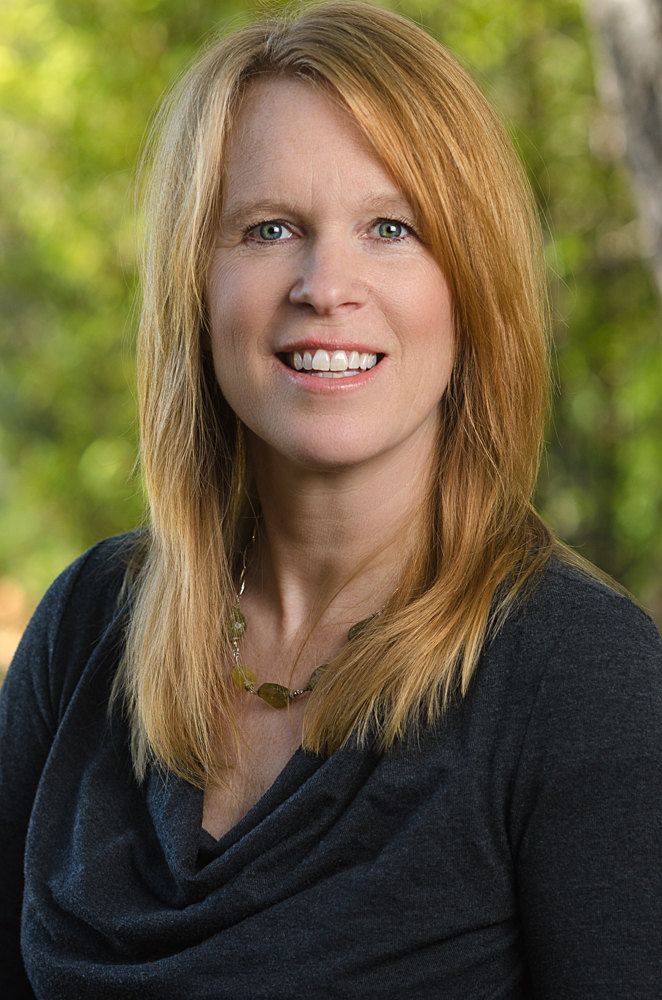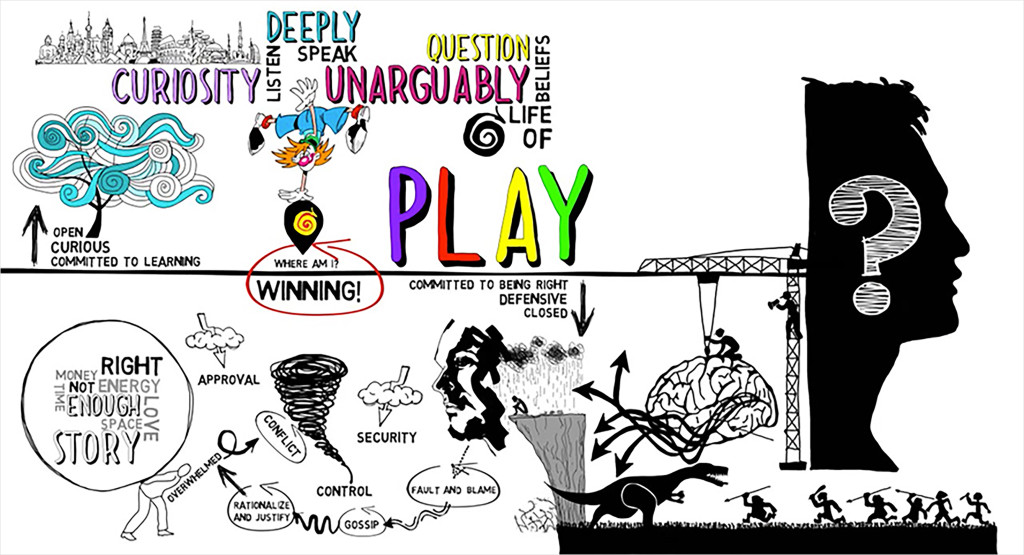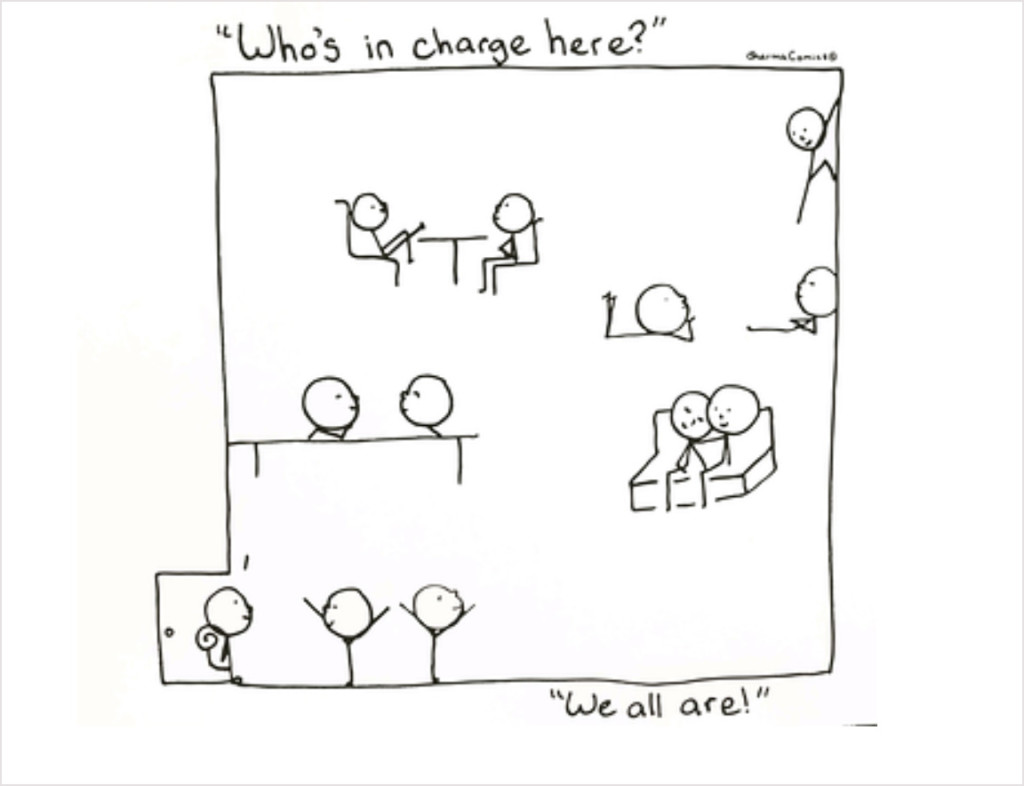A simple shift to change how you work
Individuals who’ve gone through her training reported being more creative, having more energy, and developing a sense of closeness and openness with the people they work with.

Diana Chapman isn’t your typical leadership trainer. The co-founder of the Conscious Leadership Group, she travels the country and the globe helping people think differently about the world around them, beginning with themselves.At the core of her team’s practice is the belief that consciousness and self-awareness can dramatically help us become better leaders and better teammates, too. Individuals who’ve gone through her training reported being more creative, having more energy, and developing a sense of closeness and openness with the people they work with.
Diana and her team work with a wide range of organizations — from hospital systems and investment firms to pharma and tech companies (every Asana goes through conscious leadership training). Their services primarily target CEOs and executive teams because, as Diana says, “culture starts with those that have the most influence in an organization.” But the practices they teach can be applied by anyone.
With recent studies showing that emotional intelligence can be more important than IQ when it comes to success in the workplace, it’s worth exploring how we can all be more aware of our surroundings, and each other.
An introduction to conscious leadership
When we’re below the line, we’re closed off and defensive, but when we’re above, we’re open and curious — that’s where the magic happens.
 image source: The Conscious Leadership Group
image source: The Conscious Leadership Group
The Conscious Leadership Group grounds itself in a framework of 15 ‘commitments’ designed to help individuals locate themselves on a ‘map.’ At any given time, according to Diana’s group, we may find ourselves either above or below the line, the former being a responsive role with the latter being a reactive one. When we’re below the line, we’re closed off and defensive, but when we’re above, we’re open and curious — that’s where the magic happens. Diana defines consciousness as being in the present moment in a non-reactive, non-triggered state where we can fully access our IQ, EQ, and BQ (body intelligence).
In strong leadership, EQ trumps IQ, but BQ is really key to awareness — great leaders are able to access all of these centers.
So where are the rest of us living?
Life below the line
Most organizations are running from the mindset of “life is happening to me.” A huge percentage of the population lives in that place, believing that they don’t have an effect, rather, they are at the effect of what is going on around them. You probably know the drill of rolling into work and feeling like what you’re doing doesn’t really matter, and that you can’t really change things. So we fall back on bad habits like gossiping with our teammates and telling ourselves stories that suggest we’re not really in control.
Diana and her colleagues argue that this victim stance is a choice, one that each and every one of us has an opportunity to shift away from. We spend so much time paying attention to content, we’re hardly aware of the context and this crucial mistake leads us to fall into the habit of accepting the world around us, even when that world isn’t serving us.
The common ‘stories’ we tell ourselves
A few of the ways we keep ourselves below the line.
- I can’t get paid for doing what I really love.
- If I tell the truth about how I feel, I’ll get fired.
- If I were really honest about what I don’t like about my job, they wouldn’t keep me in my role.
- I can’t quit this job because I have bills or kids, or anything else (typically related to financial scarcity)
- It’s never going to change. Why bother?
One of the most common below the line practices you might be familiar with at work is gossip. It is one of the most toxic things that can happen at an organization and is often a replacement for fear of expressing authentic feelings. Those who partake in gossip do so for many reasons: it’s a way to avoid conflict, and it can create a real bond. But it is often a projection, an unloved aspect of ourselves.
You might start to wonder, as you read this article, what is it that you get from living below the line? And the simple answer is that you (or I) get to be right. If you know you’re right, you can continue to stay in the ‘known’ zone. The unknown is unarguably scary and most of us are afraid of being with fear.
Starting to shift
The first step to moving from below the line to above the line is locating yourself. The first practice is simply asking yourself, moment by moment, if you’re above or below the line.
We all go below the line, all the time. The first step to moving from below the line to above the line is locating yourself. The first practice is simply asking yourself, moment by moment, if you’re above or below the line. Most of us are pretty good at bullshitting ourselves so it’s always a good idea to ask for some feedback from someone you trust to gauge whether your assessment is truly accurate. Diana says if you’re able to do just this — to locate yourself below or above the line — you’re already making progress.

image source: The Conscious Leadership Group
As human beings, we’re prone to blind spots that like to think we’re more open than we are. But if you’re truly ready to move above the line, you can open yourself up to an entirely new way of thinking and living.
As human beings, we’re prone to blind spots that like to think we’re more open than we are.It’s a healthy defense mechanism that shielded us from intense trauma and hurt as children, but they can become fixations. As adults, many of us fool ourselves into thinking we’re more willing to shift than we really are. So once you’ve located yourself, the second most important step in this process is asking yourself if you’re really willing to shift. Most of us want to shift, but many of us are not willing. If you’re not ready, saying no is as valuable as saying yes. But if you’re truly ready to move above the line, you can open yourself up to an entirely new way of thinking and living.
Are you willing to learn how to get paid doing what you love? Maybe your dream is to teach guitar lessons, but you’ve got a mortgage and a kid that keeps you from doing so. Change can be slow, but with each step (teaching part-time, for example), you’ll learn new information. It’s all about getting curious enough to go and discover.
How to start practicing everyday mindfulness
One of the things Diana teaches everyone who goes through her training is ways to stretch mindfulness (awareness of what’s happening in the moment) into engagement that requires full participation. She recommends several simple techniques for refocusing energy away from stressful situations and toward the things that really matter:
- Recognizing what you can control and what you can’t control. Recognize where you have control, and use it. Tell yourself this: if there’s something I can control, I can make requests.
- Recognize where you don’t have control, and accept it. Resisting what is and trying to control a situation you inevitably won’t be able to leads to your own suffering.
At the end of the day, we have powers we don’t use, and some powers we can’t use. You have to let that go.
Using (and not being afraid of) emotions at work
A common misperception about emotions is that there’s no place for them at work. Diana says, “my dream is for us to be able to say today is Wednesday and I’m angry (or scared, sad).” Just as we need to accept that there are some things we can or can’t control, we don’t have to stop people’s feelings or try to fix them, but rather, listen to the intelligence of those emotions.
A key practice of conscious leadership is acknowledging a feeling, and then releasing it.
If a bunch of us are starting to feel angry about a direction our company is taking, that’s intelligence saying, “Stop. Something is not working.” Maybe if we are feeling sad, we need to let go of the vision we had so we can be with what is. A key practice of conscious leadership is acknowledging a feeling, and then releasing it. It can be as simple as breathing through an emotion, sounding it out, or moving it through to completion. Whether it be clenching your teeth into a towel and screaming, crying, punching a punching bag, or going for a run, our feelings don’t have to signify weakness or vulnerability.
We can be scared AND in power. Acknowledging these feels can help us move toward a more open and creative place. In the beginning, you’ll find that being open and vulnerable at work can feel clunky. But with time, you can smooth it out and become more efficient. There are certain personalities that will prioritize rationality over emotionality, but there’s a cost to this way of thinking.
Efficiency is created when we are in the context of curiosity: to be more self-aware creates an experience where we can create more with less energy.
When you’re living below the line, you don’t listen, and communication inevitability takes longer. Diverse perspectives can often be lost: people are so caught up in fear about expressing an idea that could be THE idea that they can never get it out. Efficiency is created when we are in the context of curiosity: to be more self-aware creates an experience where we can create more with less energy. For companies that are on the cutting edge of innovation, living at the edge of the unknown is key to progress. If you’re scared, that’s a good thing.
Committing to practice
A team of any size can practice together, but it helps if support comes at a management level. So if you are interested in trying this out with your team, introduce the concept to a few teammates, and ask them if they’d be interested in learning more.
The most logical question most people would have after internalizing this new way of thinking is: how do I get started? And what if I don’t work for an organization that is invested in this type of practice? Diana concedes that in order to commit to this practice, it is important to have a community, whether it be at work, or an external forum. Pushing this way of thinking in an organization that is unwilling to shift isn’t a good idea. But you don’t have to be a CEO to start living above the line. A team of any size can practice together, but it helps if support comes at a management level. So if you are interested in trying this out with your team, introduce the concept to a few teammates, and ask them if they’d be interested in learning more. Having a shared framework and language around these issues as a team is also helpful.
The Conscious Leadership Group recently came out with a book detailing the approach and helping you create a practice. It’s also worth exploring resources from the Angiogram Institute, which offers a lot of reading that maps well to this way of thinking.
Once consciousness becomes a part of your everyday, you might be surprised to see how much more energy you have, and also empathy for your teammates. You begin to see more of your own biases, and will learn to trust yourself and others more. Creating a culture of trust isn’t just the responsibility of the leader (though he or she is instrumental in getting it adopted across the organization), it is a commitment every individual must make to themselves, and each other.
3 workplace tips from Diana
On gossip:
Gossip often represents parts of ourselves we don’t value. If you’re really courageous, you can address your teammates about gossip and let them know you’d like to create an environment where everyone can speak honestly and directly. The Conscious Leadership Group offers a ‘clearing model’ for addressing grievances which includes a script of simple questions. The goal of airing out is to avoid dropping below the line and moving forward lighter, freer, and more open.
On the value of play:
You can’t throw a football in a room and call it play; a lot of companies aren’t playing. Play is a state of mind, not just activity. I challenge everyone who reads this to ask themselves “what does it really mean to be committed to play as part of our working experience?” I want professionals to know that it’s ok to play — it brings a lightheartedness to everything and is one of the qualities that helps companies attract and keep good people. It also makes it easier to learn.
On working with difficult teammates:
It’s important to remember that everyone is just doing the best they can. When someone is being difficult, it’s typically because there’s a threat to their identity or ego. When we feel threatened, we act in ways that aren’t collaborative. When you’re dealing with someone who is being difficult, employ the empathy technique: imagine you’re dealing with your brother, dad, or daughter and ask yourself, “how would I want others around them to treat them?” It’s a great shift move. If someone is being really reactive, try to ask good questions in the moment and really listen — a lot of times, people just feel frustrated that they’re not being heard. Ask the person what’s not working, and let them know you’re listening.
Further reading
If you’re interested in learning more about conscious leadership, regardless of your role, the Conscious Leadership Group recently published a book called The 15 Commitments of Conscious Leadership. This book will help you learn how to be more present and have more access to all three center of intelligence including your emotional and body intelligence.
